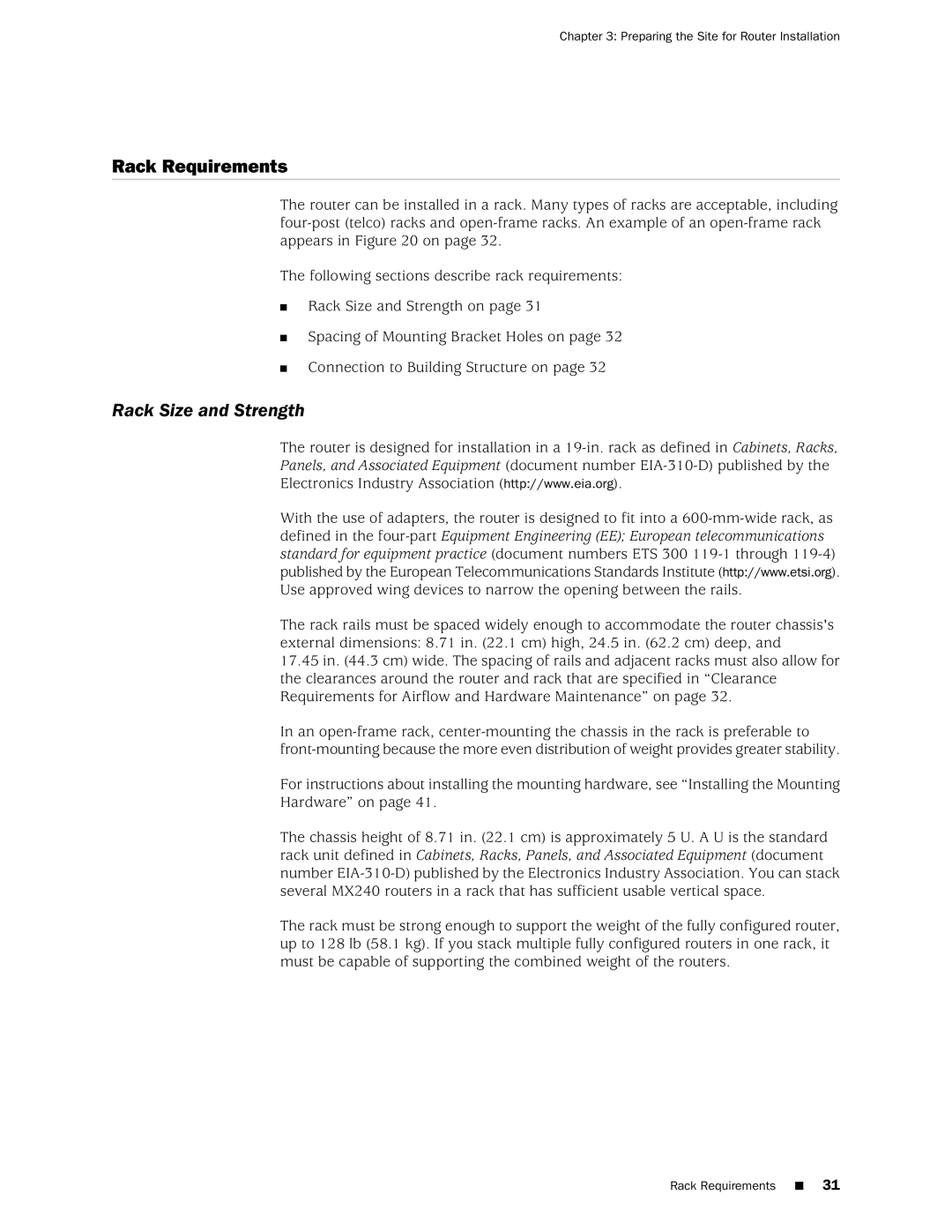Chapter 3: Preparing the Site for Router Installation
Rack Requirements
The router can be installed in a rack. Many types of racks are acceptable, including
The following sections describe rack requirements:
■Rack Size and Strength on page 31
■Spacing of Mounting Bracket Holes on page 32
■Connection to Building Structure on page 32
Rack Size and Strength
The router is designed for installation in a
With the use of adapters, the router is designed to fit into a
The rack rails must be spaced widely enough to accommodate the router chassis's external dimensions: 8.71 in. (22.1 cm) high, 24.5 in. (62.2 cm) deep, and
17.45in. (44.3 cm) wide. The spacing of rails and adjacent racks must also allow for the clearances around the router and rack that are specified in “Clearance Requirements for Airflow and Hardware Maintenance” on page 32.
In an
For instructions about installing the mounting hardware, see “Installing the Mounting Hardware” on page 41.
The chassis height of 8.71 in. (22.1 cm) is approximately 5 U. A U is the standard rack unit defined in Cabinets, Racks, Panels, and Associated Equipment (document number
The rack must be strong enough to support the weight of the fully configured router, up to 128 lb (58.1 kg). If you stack multiple fully configured routers in one rack, it must be capable of supporting the combined weight of the routers.
Rack Requirements ■ 31
